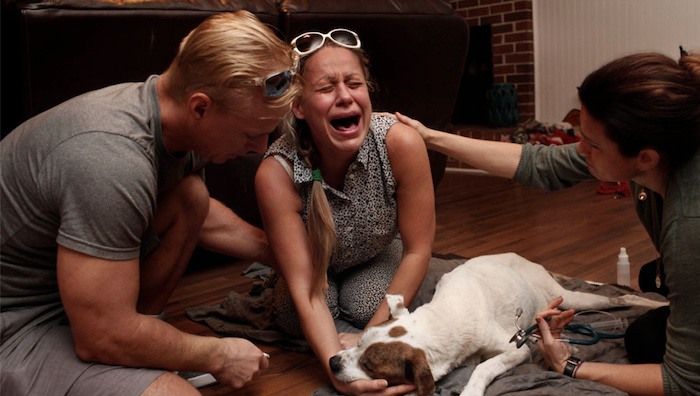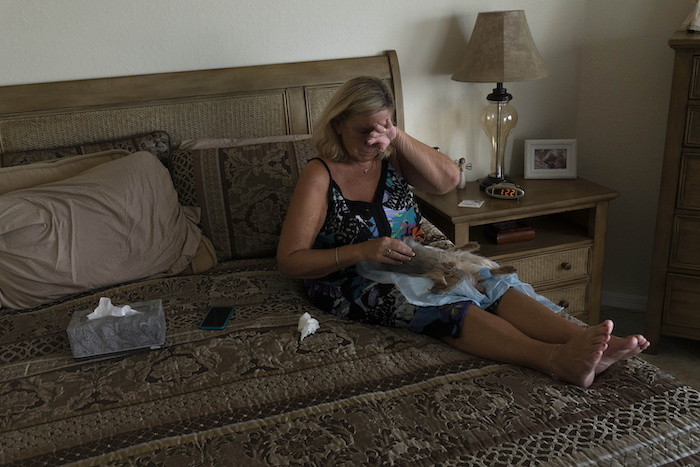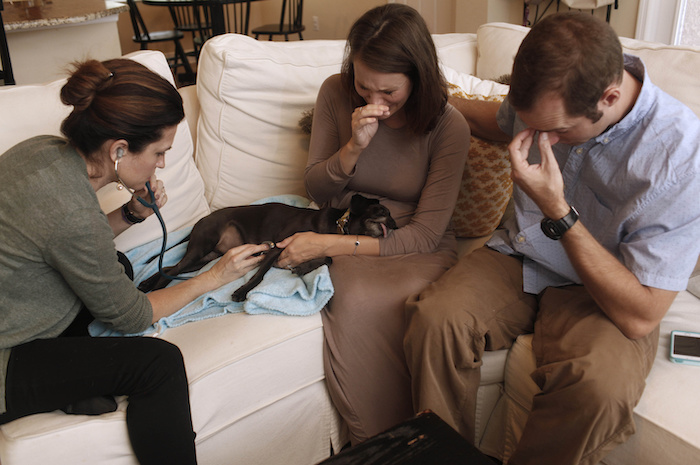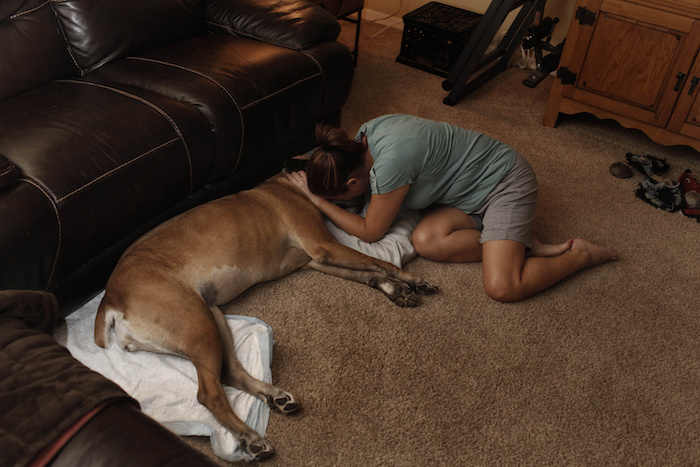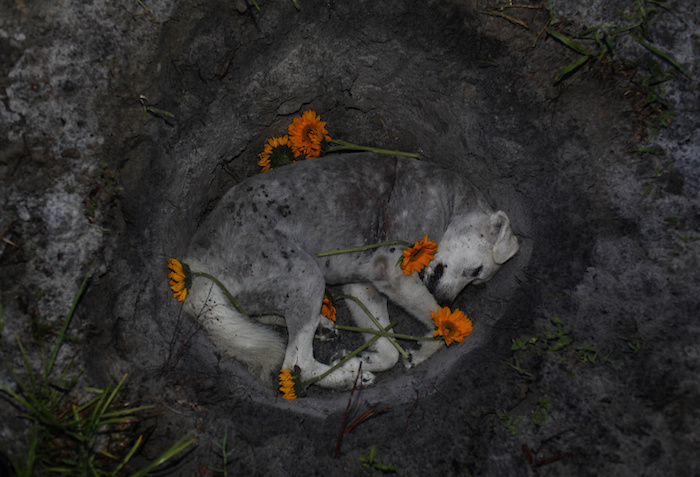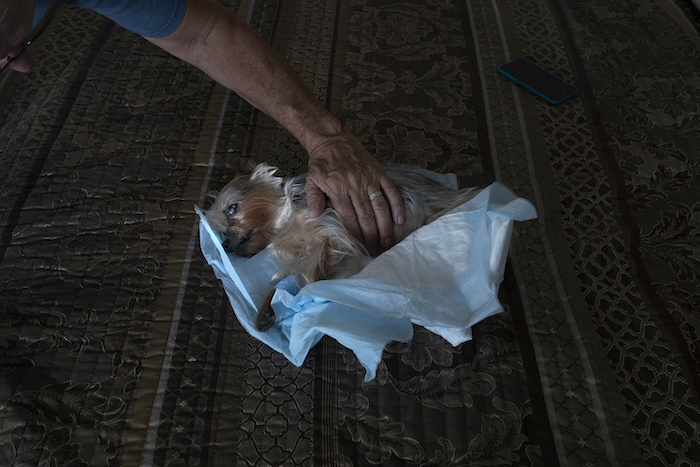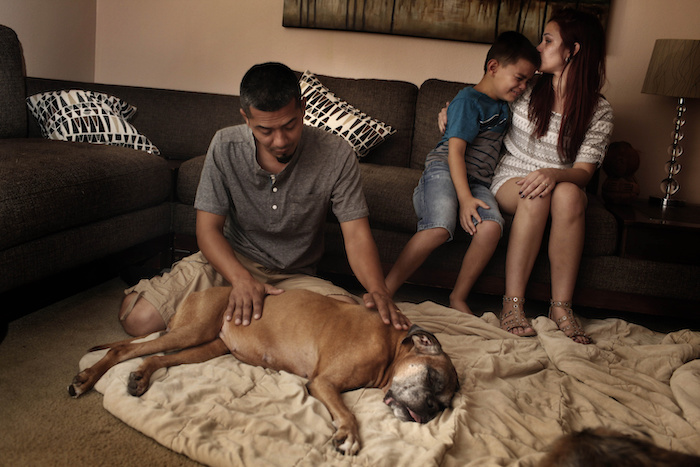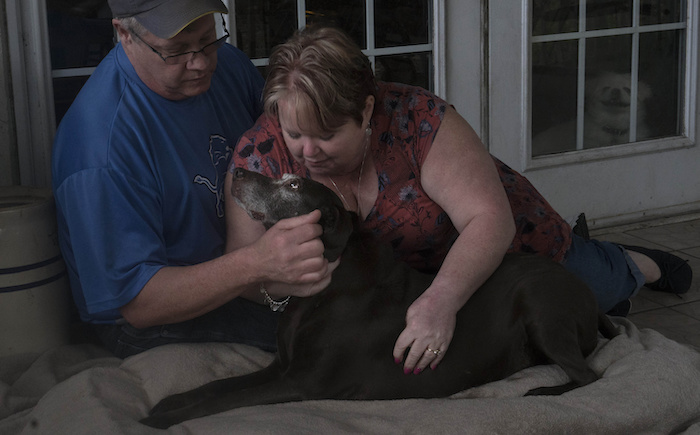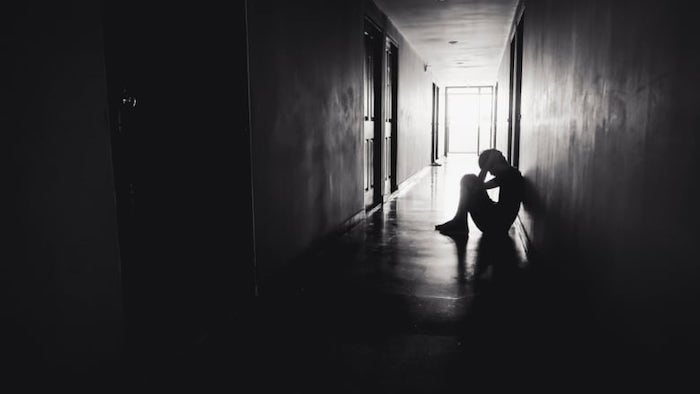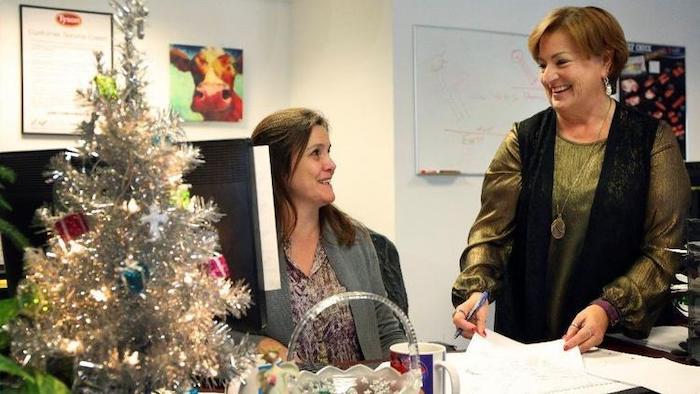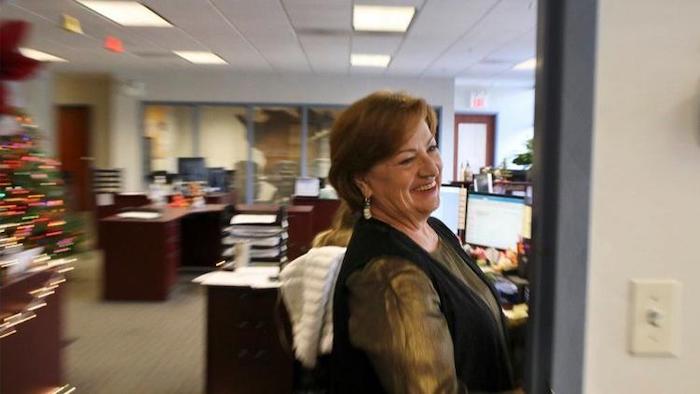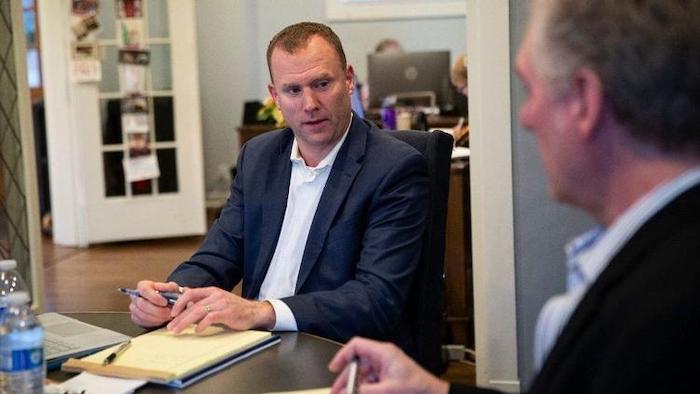Maine hospice and health care professionals, medical students and even loved ones can broaden empathic responses via virtual reality.
by Kelley Bouchard
Pull the headset over your eyes and the world around you fades. You have become 66-year-old Clay Crowder, and you are dying.
Your doctor looks into your eyes and quietly explains that medical treatments aren’t working. The lung cancer has spread. You have four to six months left.
Later at home, you doze while listening to your wife and two daughters discuss your care with a hospice worker. As death nears and pain intensifies, you see what’s happening inside your body. Your lungs and rib cage begin to heave rapidly. Medication eases your discomfort. Your breathing returns to a slow rattle.
Family members gather around your bed. You hear them talking. Prompted by a hospice nurse, your wife tells you that it’s all right to let go.
“It’s OK, honey,” she says. “You’ve got your girls here.”
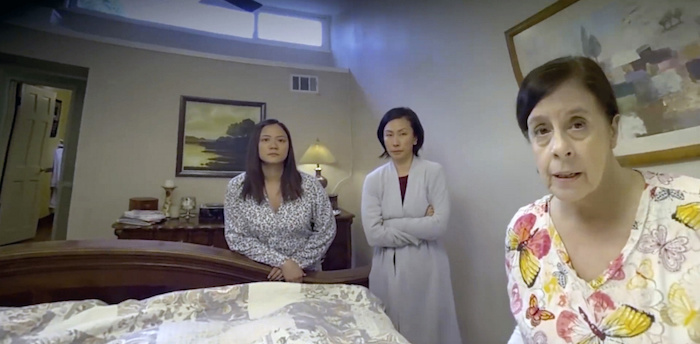
It’s tough being Clay, a new interactive, virtual reality video that lets the participant go through one man’s end-of-life experience. Hospice of Southern Maine and the University of New England are using the computer simulation lab as a learning tool for health care professionals, medical students, hospice workers and patients’ loved ones.
A box of tissues is always nearby.
“It’s powerful,” said Susan Mason, clinical services manager for Hospice of Southern Maine. “I’ve been a hospice nurse for five years and I was truly shocked at how much I hadn’t considered before I went through the experience as Clay. You truly feel like you’re in it.”
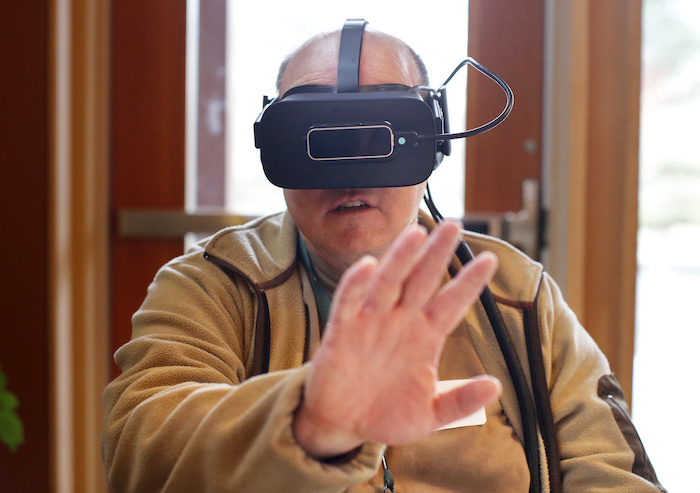
Clay Crowder, family man and military veteran, is the creation of Embodied Labs, a Los Angeles-based company that has produced several computer sim labs designed to put people in a patient’s body.
The University of New England in Biddeford has been using the company’s virtual reality technology for nearly two years, to help medical students better understand what it’s like to experience health problems as common as hearing loss and as devastating as Alzheimer’s disease.
Now, Hospice of Southern Maine, based in Scarborough, is using the Clay lab to give staff and family members a better sense of what it’s like to die. Even the most experienced hospice caregivers can find themselves reaching for a tissue and learning something new.
Hospice CEO Daryl Cady said she believes the Clay lab has the power to change the way people feel about death and hospice care, especially for younger generations who are familiar with virtual reality technology.
“It’s so important that people understand how hospice can help at the end of life and not fear it,” Cady said. “If they take just 30 minutes to put on the VR goggles and stand in the shoes of someone with a terminal illness, just think of the change that could make.”
POPULATION AGES, DEMAND GROWS
Cady said the Clay lab also gives hospice staff and volunteers an opportunity to witness the conversations that happen when a physician delivers a terminal diagnosis and the family dynamics that often come into play.

Such education and outreach is expected to become increasingly important as Maine’s population continues to age and demand for hospice care grows.
Maine’s population is now solidly the oldest in the nation, with the highest median age of 44.7 years – meaning the younger population is dwindling – and tied, with Florida and Montana, for the largest proportion of residents age 65 and older – 19 percent of the state’s 1.3 million people, according to the U.S. Census.
Hospice of Southern Maine’s clinical teams – nurses, social workers and others – visit about 200 patients daily, up from about 130 patients daily just three years ago. Last year, the agency cared for a total of 1,641 patients – either at home or at Gosnell Memorial Hospice House in Scarborough – a 2 percent increase over the previous year, according to the nonprofit’s annual report.
Maine’s use of hospice services has grown steadily in the last decade, Cady said. When Hospice of Southern Maine started operating in 2004, about 9 percent of Medicare-eligible Mainers used hospice services, placing the state at 49th in the nation. By 2013, 57 percent of eligible Mainers were accessing hospice care and the state had moved to 25th in the nation, according to Medicare data.
“The Clay lab will help us educate the community about the end-of-life experience,” Cady said.
BASED ON FAMILY EXPERIENCE
Inside the Clay lab, with the virtual reality goggles over your eyes, you experience the transitions that patients and family members must make throughout the dying process.
When the doctor says you have a few months to live, you turn to your left and see the pained look on your wife’s face. To your right, your feisty daughter presses the doctor to explain why surgery is no longer an option. Your family is adamant. They won’t let you just “fade away.”
Later, you wind up in the emergency room after a serious fall. A compassionate nurse explains some of the benefits of hospice care. Mostly it’s about doing what you’re able to do and keeping you comfortable.
“It comes down to how you want to spend the time you have left,” she says.
Embodied Labs was started in 2016 by four young technology entrepreneurs. CEO Carrie Shaw, a medical illustrator and health educator, was just 19 years old when she helped care for her mother, who had early-onset Alzheimer’s.
That experience prompted Shaw to wonder if putting health care providers in their patients’ skin might make them more effective. Her older sister, Erin Washington, designs the company’s curriculum.
First, the company produced a sim lab experience called Alfred James, a 74-year-old African-American man with advanced macular degeneration and high-frequency hearing loss.
Next, they created Beatriz Rogers, a middle-aged Hispanic woman who progresses through the early, middle and late stages of Alzheimer’s. Clay Crowder is their latest.
LINKS TO UNE, MAINE HOSPICE
All three sim labs are required viewing in the geriatrics education program at UNE’s College of Osteopathic Medicine, one of the few med schools in the nation that require significant training in aging-related health issues.
“Students are always amazed at the experience of becoming Alfred or Beatriz or Clay,” said Marilyn Gugliucci, director of UNE’s geriatrics program. “It’s always interesting to see how they respond to Alfred’s frustration that his doctor is treating him as if he has cognitive impairment when he doesn’t. He just can’t see or hear well.”
Embodied Labs, UNE and Hospice of Southern Maine have developed mutually beneficial relationships, Gugliucci said.
The Clay lab was created after a team from Embodied Labs spent 48 hours at Gosnell House, interviewing staff members and witnessing all that they do, similar to the experience that several UNE med students have each year.
More recently, another team from Embodied Labs spent 48 hours in the dementia unit at the Maine Veterans’ Home in Scarborough, where UNE med students go to learn what it’s like to live in a nursing home, Gugliucci said.
The team’s experience will be woven into the next virtual lab, which will feature a Muslim woman who has Parkinson’s disease and Lewy body dementia, the second most common form of dementia after Alzheimer’s disease.
‘WHAT ACTIVE DYING LOOKS LIKE’
The Clay lab is presented in three segments: terminal diagnosis, decision to start hospice care and death.
“You see what active dying looks like, including what actually happens to the body,” Carrie Shaw said. “Our goal was to make something that’s not scary or grotesque, but it is informational.”
The last segment takes place in Clay’s bedroom.
Again, you are Clay.
Your eyes are nearly closed and your vision limited as family members and caregivers come and go. You hear them talk about your cold feet and your blue hands. Your daughter wonders if you need a feeding tube. The hospice nurse quells her concerns about your declining need for food.
Your death is shown symbolically. An imaginary great blue heron that has visited you before, capturing your fading attention to this world, appears again and flies off from the foot of your bed.
You watch the rest from above as your wife and daughters take turns saying goodbye.
The hospice nurse returns to bathe and dress you in your military uniform. She speaks to you in a gentle, now familiar voice, as if you are still alive.
“Mr. Crowder, we’re going to take care of your body now, OK?” she asks.
Your experience as Clay Crowder ends as your casket, draped in an American flag, is wheeled out of the house.
Complete Article ↪HERE↩!


